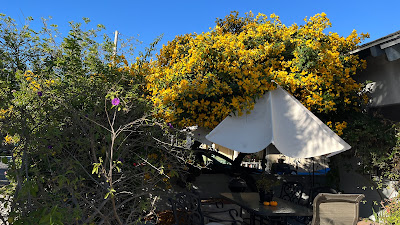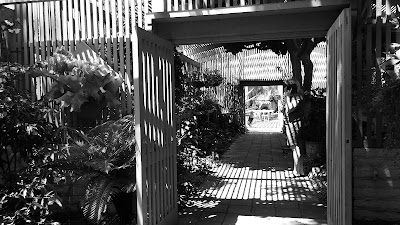Wednesday, October 25, 2023
Landscape design and swimming pool in Palm Springs
Senna Pendula- Cassia Splendida
Senna Pendula as seen during Fall season. Photo by Myriam Mahiques, personal archives 2023
Monday, August 21, 2023
Le Meridien: a fabric landscape
Sunday, May 7, 2023
What is a trellis? The beauty of a trellis
A touch of red color flowers in combination-contrast with the green trellis.
Tuesday, March 7, 2023
Water Garden in Tochigi
Today I am sharing a landscape design from 2018, a beautiful water garden in Tochigi, Japan.
I see it as a fractal garden design with healing, calming, characteristics. Each reflection, similar and different at the same time. There is not a single detail to miss here.
The landscape of Amorepacific Headquarters
Thursday, February 23, 2023
(Edible) Nasturtium Tropaeolum Majus
Close up of Nasturtium Tropaeolum Majus. Photo by Myriam Mahiques, 2021. Personal archives.
Long years ago, a friend of mine gave me some packages of Nasturtium seeds, of different colors.
Planting them gave me the joy of filling out my tiny garden with beautiful leaves and flowers. The plants spread very quickly, under the sun and the shadow. The cons, there were lots of snails reproducing under them.
Wild radish (Raphanus Raphanistrum)
A dreamy view of Wild Radish flowers. Photo by Myriam Mahiques, 2021. Personal archives
I like to find edible wild plants and flowers, and I try them if I can. Usually I can find a few edible plants at the Huntington Beach Central Park, but I don't dare to cut the plant or flowers, due to respect to the park and all the volunteers working there.
Anyway I can enjoy the view of those plants close to the local lake. Though the flowering period is Summer, the mild weather of California allows the Wild Radish to be in full bloom even in Winter, by the time I have taken all the pictures posted here. All pictures belong to my personal archives, please do not share without my permission.
The following excerpts are from Wikipedia:
Sunday, January 8, 2023
Palm Springs: notes about landscape and urban art
"Isabelle" by Julian Voss Andreae. Photo by Myriam Mahiques, personal archives. 2023
"Isabelle" by Julian Voss Andreae. Photo by Myriam Mahiques, personal archives. 2023
I have been in Palm Springs many times, most of all for business, and I always take the time to walk around Downtown and see what is new or coming next.
One of my favorite urban sculptures is the one shown above, "Isabelle", built in stainless steel, it has the particularity that depending on one's point of view, the woman can be seen in full or translucent at the point of almost disappearing. I think the location of "Isabelle" is not a fortunate one. It is hidden from the Starbucks plaza, where most people meet or stay, it is around the corner and every time I've been there, this service street is empty. Besides, I was lucky this time that it was a bright day, because this street is in shadows due to the building heights and orientation, and the ghost effect could be missing if there is no proper light.
I have my own architect's impression. I have walked around and took pictures from every point of view.
Even though I am not a fan of Pop Art, I agree with Aftab Dada that this sculpture is an interesting icon and that, sharing photos on social media will help the City of Palm Springs to be well known, which is ideal to get more tourists.
The sculpture looks very impressive, located at the beginning of the pedestrian walkway that leads to the main entrance of the Palm Springs Museum of Art. I feel that somehow it is blocking the Museum's front view, given the enormous scale and considering the quantity of people that gathers around to take selfies.
Sound Atmosphere After the Wildfires
The silhouette of a crow standing on the remnants of a house in Altadena. Photo by Myriam Mahiques, March 2025. Each neighborhood an...

-
I have been navigating the City of Monrovia web page, looking for contact phones, and I came across with this interesting information abou...
-
The Norton Simon Museum is celebrating its 50th Anniversary this year and it deserves a post. I visited this Museum in 2023 with my son, wh...
-
Entering Gas Works Park, Seattle. All photos in this post belong to my personal archives. June 2024. I had read about Gas Works Park in a Th...





































































